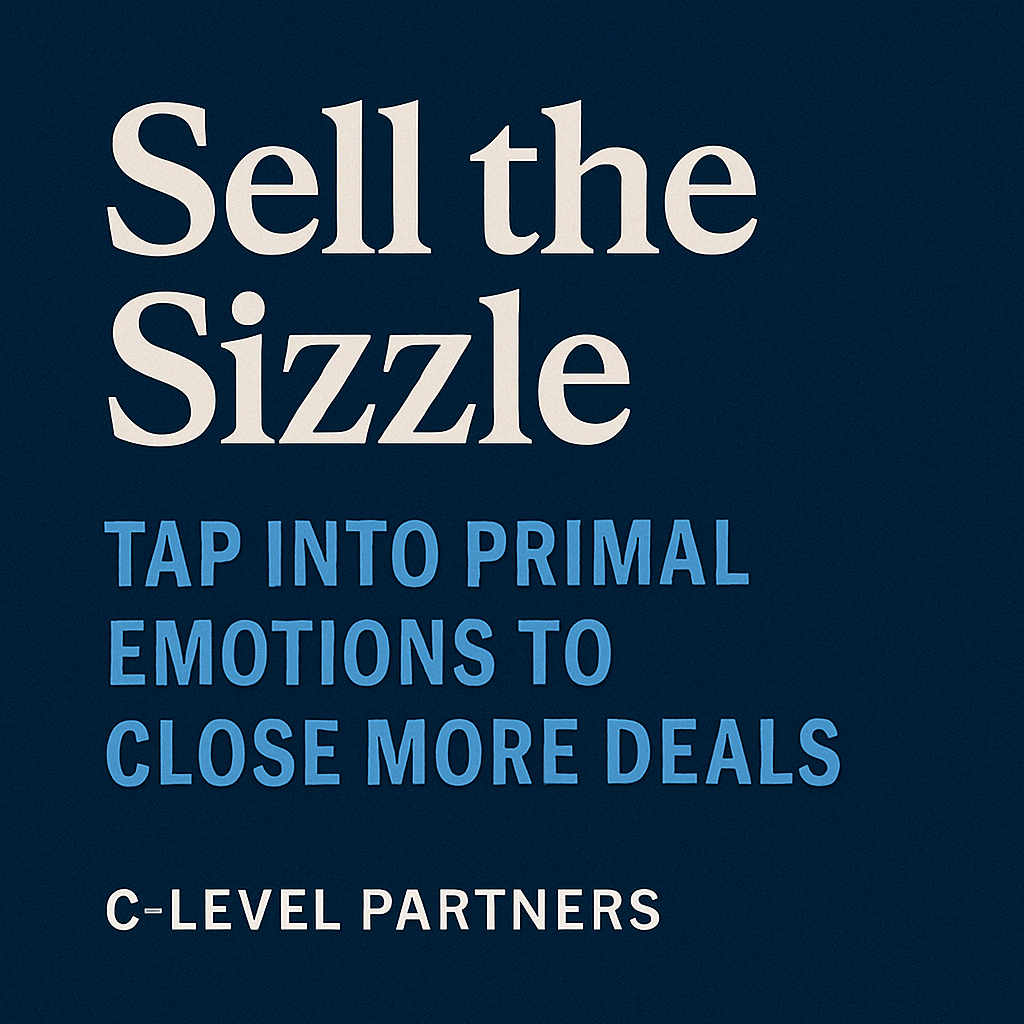Ever eat at a Mexican joint? You know when the steak fajitas come flaming out of the kitchen — everyone suddenly wants to order that. They want the sizzle. The sizzle sells.
Well, way back in the 1930s, legendary sales trainer Elmer Wheeler coined the phrase “Sell the sizzle. Not the steak.” Meaning, people don’t buy products or services… they buy the feeling and experience of using that product or service.
It’s the sights, the sounds, the smells, the anticipation of sinking your teeth into that perfectly-cooked steak, but not the steak itself. And there’s a massive distinction here that you must understand.
RELATED: The Fortune 500 Playbook – How to Land BIG Accounts
Or have you ever bought a new car off the lot? If so, you didn’t thumb through the owner’s manual and ask about all the switches on the dash. You bought the car for the way it made you feel… or how it sounded when you revved the engine (the power!)… or even how it smelled inside. You could “see yourself in it.” You imagined pulling up to your girlfriend’s house in that car. Now that’s the sizzle.
Track with me here. The “sizzle” in B2B is not your software or the product or service you sell. It’s not the features. It’s not even the benefits. It’s the transformation that takes place in your prospect’s mind when using your product/service. That’s the sizzle. And that’s what you have to communicate to your buyer.
Sales Tip: If you try to sell the steak, you become a commodity and lose. If you sell the sizzle, you become a force of nature that can’t be beaten.

Why ‘Selling the Sizzle’ Just Plain Works
It’s never “just business.” “Just business” is for the birds. Every deal might initiate on the logical right-brain level, but decisions are ultimately made at the level of the brain called the “croc brain” or “animal brain.”
In other words, the synapses that trigger to buy (or not to buy!) bypass the logic-center of our brain and go much deeper into the subconscious.
And guess what… C-level decision makers are human, just like you and me! They make buying decisions just like we do. So we need to pump the brakes on all the industry jargon and stop selling the features and specs.
Again, decisions are made at an emotional level and only later are justified on a logical level.
Here are some emotional triggers in B2B decision-making:
- Fear of losing to competitors
- Wanting to look good in front of the CEO
- Wanting to stay ahead/innovative
- Frustration with old/outdated processes
- Desire for prestige and higher standing
- [Insert your prospect’s deepest desires here]
Fear, ambition, scarcity, safety, relief. These are all buying triggers that you need to ethically tap into. Don’t worry — I’m going to explain exactly how to do this next.
RELATED: 7 Ways to Close Deals Without Being Pushy
What’s the “Sizzle” in B2B?
The sizzle in B2B is painting a picture, with your words, of a new reality where the prospect avoids certain defeat and instead wins the day.
This could be beating competitors, looking like a hero in the CEO’s eyes, innovation that draws attention, alleviating headaches by making outdated processes new again, and/or stepping into prestige and higher status.
The sizzle is personal and will differ from person to person. So how do you identify the sizzle and sell it?
How to Identify and Sell the Sizzle
This part is actually simple. Just follow the rabbit-trail back to its source. For instance, if you’re selling HR software, your prospect doesn’t buy it because it’s better than their current model, or because it will put their whole team on the same page, or that it will save them money or make them money, or even that it will earn them a promotion. While all of these factors might be true, the rabbit-trail continues further to the very source! The deepest source of their motivations.
The source, in this case, is something like “Job security.” Or possibly, “I will stand out to the CEO and get recognized in the next all-hands.” Or even, “I will beat X employee to that promotion.” (The promotion itself isn’t as important as the competition for that promotion!) So why not just communicate that sub-text on your sales calls? Explain in clear terms to your prospect this new world they’re about to step into after purchasing your offer.
Sales Tip: Tap into primal urges if you want to resonate on a decision-making level. Competition is a primal urge… especially when it comes to identity. One of my favorite slogans is “Envy Lawn Care: Grass so green it’ll make your neighbors jealous.” This messaging hits men right in their manhood, and it works.
Other Ways to Sell the Sizzle…
Paint a Picture of the Future State
→ “Imagine your ops team no longer chasing down missing data…”
Use Story, Not Just Slides
→ Tell client success stories that touch on fear, ambition, or relief.
Ask Questions That Trigger Emotion
→ “What’s the cost of doing nothing here?”
→ “What would it mean for you personally to get this solved?”
Speak to Outcomes, Not Features
→ Not this: “Our platform automates reporting”
→ But this: “You get your Monday mornings back. Heck, get your life back!”
The bottom line: Create a crystal-clear vision of future success for your prospect. Make your prospect anticipate this outcome as much as he or she would anticipate biting into those sizzling hot fajitas fresh from the kitchen. Do this and you will WIN.
RELATED: How to Effectively Communicate Your Value Proposition
Logic Justifies The Decision
Of course, don’t think you can only rely on the sizzle. At the end of the day, the sizzle has to lead to something worth biting into. Otherwise you risk having your “fajitas” sent back to the kitchen, as it were.
So ask yourself, can we deliver on the sizzle? Once the sizzle subsides, is the steak still worth the price? If so, you’re golden. And it’s time to pull out all the stops with things like testimonials, case studies, white papers, etc. But if you’re not capable of delivering on the sizzle, then you should revisit your offer at the product level and shore up any weaknesses.
How to Know You’re Doing it Right?
If you’ve done the work to communicate the transformation, then you’ll find that the deals pretty much close themselves. You won’t have nearly as many objections, and your buyers are more likely to give you referrals. After all, they are sold hook-line-and-sinker on what you’re selling, so they become brand evangelists right out of the gates.
How to Know You’re Doing it Wrong?
I’ve sat in literally dozens — maybe hundreds — of sales pitches and demos where I’m being walked through a product or service. Many of these calls are yawn-inducing at best, and a downright waste of time at worst. The rep gets too deep into features and specs and completely loses the thread. And this is easy to tell — does your prospect seem disinterested, and are there a litany of objections? If so, you’re doing it wrong. Switch to selling the sizzle!
Final Words
Now you know the secret to win at sales! Just allow your prospect’s imagination to run wild and water that seed that you plant. Don’t worry, they’ll do the work of tending to their budding desires… you simply have to suggest that there’s something there worth growing. You have to communicate that there might just be a brighter future ahead… IF they act now.
So if you’re stuck in a sales slump, I highly recommend recording your next batch of sales calls and replaying them back. What are you focusing on? The features and specs and details of your offer? If so, you’re not alone; most salespeople are guilty of this. Or, are you focusing on the success that is sure to follow from using your product/service?
Trust me, this is worth digging into. It’s possibly the biggest difference-maker to improving at sales… and it can be fixed virtually overnight. You’ve got this.
Until next time…
Johnny-Lee Reinoso

